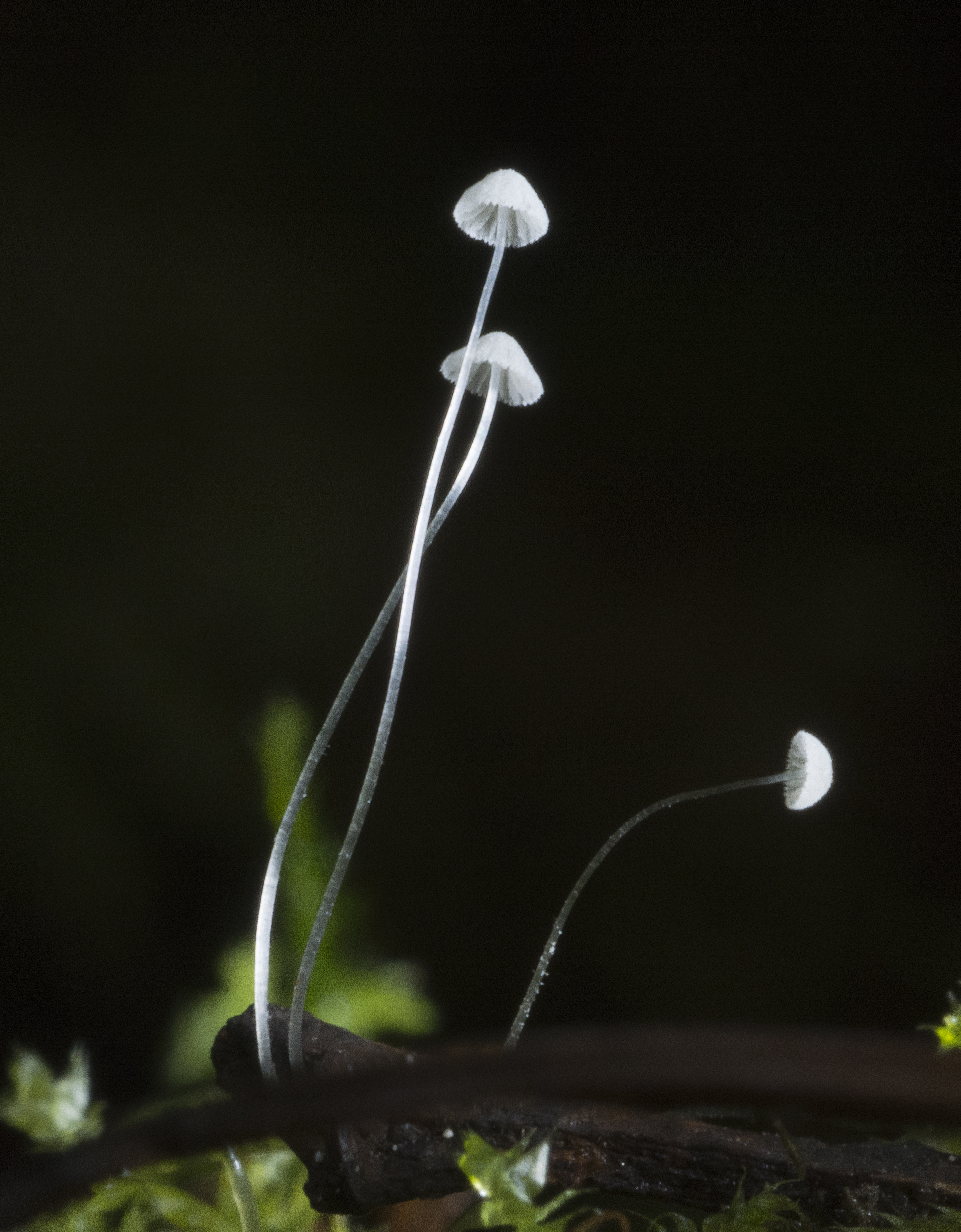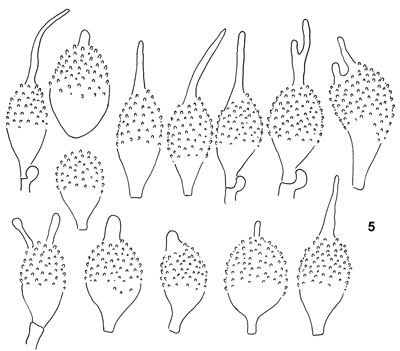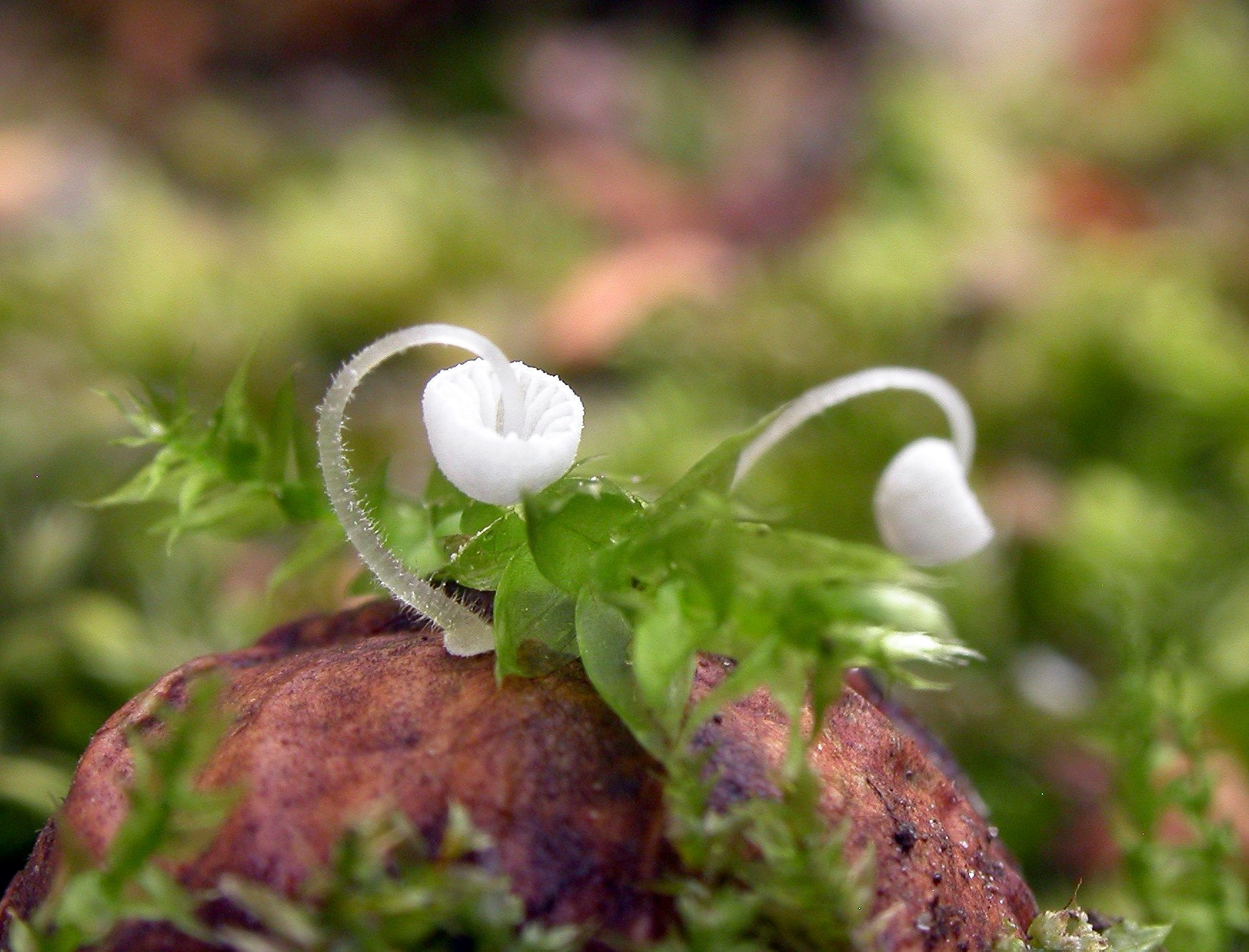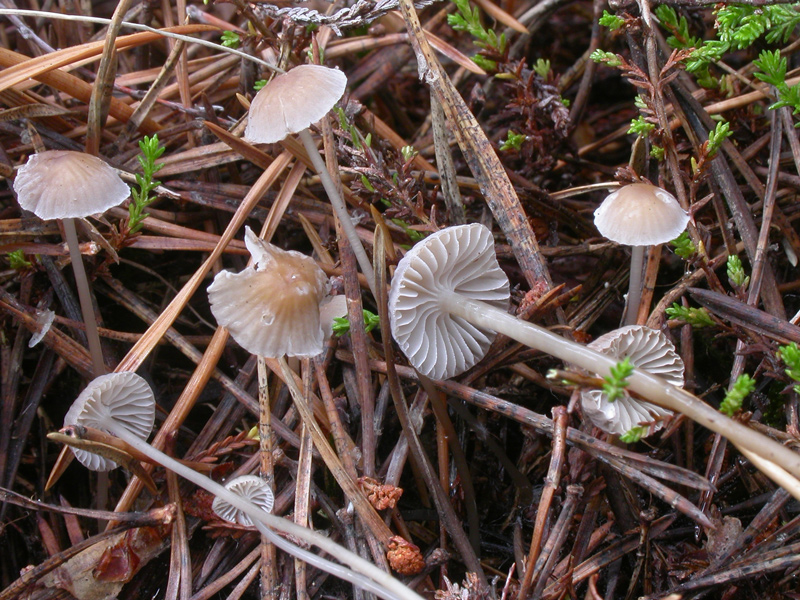Mycena tenerrima
Mycena adscendens
Description
Cheilocystidia
Cap 2-5 mm across, hemispherical, conical, becoming more or less parabolical with age, translucent-striate, shallowly sulcate, white-furfuraceous to floccose, glabrescent, white or grey. Gills 7-13, not always reaching the stem, ascending, narrowly adnate or attached to a pseudocollarium, the edge convex, white. Stem 5- 30 mm long, filiform, straight to flexuous, equal, greyish-hyaline, puberulous, glabrescent with age, but often hirsute below, the base somewhat bulbous with a small, hirsute, white, basal disc. Odour none. Basidia 14-18 x 7-9 µm, clavate or obpyriform, 2- spored, clamped. Spores 8-10.5 x 4.5-6 µm, Q = 1.5-1.9, pip-shaped, smooth, amyloid. Cheilocystidia 11-32 x 7-18 µm, clamped, clavate or obpyriform to fusiform, mostly with a slender, straight to curved, simple or occasionally furcate neck up to 20 µm long; clamped, smooth or covered with warts or cylindrical excrescences 0.5-1.5 x 0.5 µm. Lamellar trama dextrinoid. Hyphae of the pileipellis smooth to verrucose, clamped, with terminal cells globose to obpyriform, densely covered with warts. Caulocystidia 20-110 x 6-7 µm, lageniform to cylindrical, smooth. Basal disc cystidia similar to the caulocystidia but typically shorter, often in chains of 2-4 cells, terminal cells 22-60 x 5-12 µm, cylindrical, clavate, lageniform, obtuse to subacute, smooth or rarely with a few coarse, apical excrescences. Clamps abundant.
Ecology and distribution
On fallen twigs or moss-covered trunks of deciduous trees, or on fallen leaves of e. g. Salix and stems of different herbs, such as Filipendula ulmaria. Also found on fallen hazel nuts. A common and widespread species in Southern Norway but probably overlooked.



